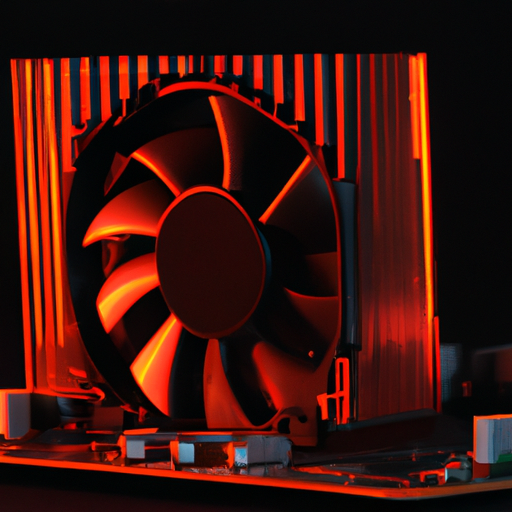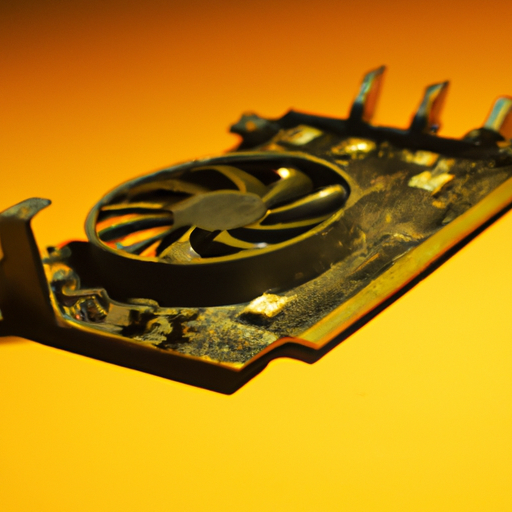What Are The Signs Of GPU Failure? 37 Telltale Signs
So, you’re a tech-savvy individual who wants to stay one step ahead and keep your PC running smoothly. Well, my friend, you’ve come to the right place. In this article, we’ll be answering the question, “What are the signs of GPU failure?” equipping you with the knowledge you need to identify any potential problems before they become major headaches. Whether you’re a casual gamer or a graphics-intensive professional, understanding the signs of GPU failure will help you take proactive steps to keep your system in tip-top shape. So, let’s dive right in and discover the key indicators that could spell trouble for your graphic processing unit!
Physical Signs
Artifacting
One of the physical signs of GPU failure is artifacting. Artifacting refers to visible glitches or artifacts on the screen that appear as distorted or pixelated images. You may notice random colorful pixels, lines, or shapes on your display that are not part of the original image or video being displayed. These artifacts can appear in various forms and sizes, indicating a potential issue with your GPU.
Overheating
Another physical sign of GPU failure is overheating. When your GPU overheats, it can cause performance issues and even lead to permanent damage if left unaddressed. You may notice that your computer becomes unusually hot to the touch, or the fans in your system start running at high speeds and making loud noises to try and cool down the GPU. Overheating can result from various factors such as inadequate cooling, dust buildup, or a faulty cooling system.
Physical Damage
Physical damage to the GPU can also be a clear sign of GPU failure. This can include visible cracks, broken parts, or burnt components on the graphics card. Physical damage can occur due to mishandling, accidents, or even extreme temperatures. If you notice any physical damage to your GPU, it is important to address it promptly as it can affect the functionality and performance of the graphics card.
Weird Noises
Unusual noises coming from your GPU can also indicate potential failure. If you hear buzzing, rattling, or grinding noises coming from your graphics card while it is in use, it could be a sign of a faulty fan or a damaged component. These noises can be an indication that the GPU is experiencing mechanical issues and may need to be repaired or replaced.
Performance Issues
Frequent Crashes
One of the performance issues associated with GPU failure is frequent crashes. If your computer consistently crashes or reboots when performing graphics-intensive tasks such as gaming or running demanding applications, it may be due to a failing GPU. Crashes can occur when the GPU cannot handle the workload or when it encounters errors, leading to system instability.
Screen Freezes or Blackouts
GPU failure can also manifest as screen freezes or blackouts. If your screen freezes and becomes unresponsive, forcing you to restart your computer, it could be a sign of a GPU problem. Similarly, if your screen goes black and remains that way even though your computer is still running, it could indicate GPU failure. These issues can occur when the GPU is unable to render graphics properly or encounters errors that cause the display to fail.
Slow or Stuttering Graphics
A noticeable drop in graphics performance, such as slow rendering or stuttering graphics, can be indicative of GPU failure. You may experience lag or delays when running graphics-intensive applications or notice choppy movements in games. These performance issues can occur when the GPU is no longer able to handle the workload efficiently, resulting in degraded graphics performance.
Inability to Run Demanding Applications or Games
If your GPU is failing, you may find that you are no longer able to run demanding applications or games that previously ran smoothly. Your computer may struggle to meet the minimum system requirements, resulting in poor performance, low frame rates, or even crashes. This can be frustrating for gamers or professionals who rely on their GPU for resource-intensive tasks.

Driver Problems
Driver Crashes or Errors
When your GPU starts experiencing driver crashes or errors, it can be a sign of impending failure. You may receive error messages indicating that the graphics driver has stopped working or encountered a problem. These crashes and errors can occur due to outdated drivers, incompatible drivers, or even issues with the GPU itself. Updating your drivers may help resolve some of these problems, but if they persist, GPU failure may be the underlying cause.
Display Driver Stopped Responding
A common issue related to GPU failure is the display driver stopped responding error. This error message typically appears when the GPU driver fails to respond within a certain time frame. It can lead to screen freezes, blackouts, or even system crashes. While this error can sometimes be resolved by updating the drivers, it can also be indicative of a failing GPU that requires further attention.
Incompatibility with New Software or Updates
GPU failure can also manifest as incompatibility with new software or updates. If you install new applications or updates that require the use of the GPU and experience issues such as crashes or display problems, it could indicate that your GPU is unable to handle the demands of the new software. This can be a sign that your GPU is outdated or nearing the end of its lifespan.
Display Problems
Screen Flickering
Screen flickering is a common display problem associated with GPU failure. You may notice that your screen flickers or flashes at irregular intervals, making it difficult to view and causing eye strain. Screen flickering can occur due to a variety of reasons, including outdated drivers, hardware issues, or incompatible software. However, if other troubleshooting methods fail to resolve the issue, it could indicate a failing GPU.
Horizontal or Vertical Lines
The appearance of horizontal or vertical lines on your screen can indicate GPU failure. These lines can be thin or thick and may appear across the entire display or in specific areas. They can disrupt the overall image quality and make it difficult to view content. Horizontal or vertical lines can be caused by faulty GPU memory or connection issues, indicating a potential problem with your graphics card.
Blurred or Distorted Images
GPU failure can cause blurred or distorted images on your screen. You may notice that text or graphics appear blurry, pixelated, or stretched. These visual abnormalities can significantly impact your viewing experience and make it challenging to read or interpret content. Blurred or distorted images can occur when the GPU is unable to render graphics correctly, indicating a potential failure.
Color Banding or Incorrect Colors
Another display problem associated with GPU failure is color banding or incorrect colors. Color banding refers to visible abrupt changes in color gradients that should be smooth. You may notice bands or strips of different shades instead of a gradual transition. Additionally, the colors on your screen may appear washed out or incorrect, making images, videos, or games look unnatural. These issues can be indicative of GPU failure and may require further investigation.

Artifacts
Visible Glitches or Artifacts on the Screen
One of the potential GPU failure signs is the appearance of visible glitches or artifacts on the screen. These glitches can manifest as random shapes, squares, or lines that obscure or distort the original content being displayed. They can range in size and intensity, affecting the overall visual quality. Artifacts can occur when the GPU is unable to process graphics properly, indicating a potential problem with the graphics card.
Missing Textures or Objects
GPU failure can lead to missing textures or objects in games or applications. You may notice that certain elements within the software fail to load or render correctly, resulting in empty spaces, blank characters, or objects without proper textures. These missing textures or objects can significantly impact the gameplay or usability of the software and may indicate a failing GPU.
Tearing or Pixelation
Tearing or pixelation is another potential artifact resulting from GPU failure. Tearing occurs when different sections of the screen display images out of sync, resulting in a visible split or tear line. Pixelation manifests as blocky or jagged edges around objects, making them appear pixelated or low-resolution. These artifacts can occur during gameplay or while running graphics-intensive applications and may indicate GPU problems.
Incorrect Rendering or Geometry
GPU failure can cause incorrect rendering or geometry in games or applications. You may notice objects or characters displaying incorrectly, with distorted proportions, odd shapes, or skewed dimensions. This can make the content hard to recognize, impacting both gameplay and visual quality. Incorrect rendering or geometry can be indicative of a failing GPU that is no longer able to process graphics accurately.
Fan and Cooling Issues
Loud Fan Noises or Excessive Fan Speed
When your GPU is experiencing failure, it may result in loud fan noises or excessively high fan speeds. The GPU’s cooling system, typically consisting of fans, is responsible for dissipating heat generated during operation. If the GPU is overheating or the cooling system is malfunctioning, the fans may spin at full speed or produce loud noises as they try to cool down the graphics card. These issues can indicate inadequate cooling or a failing GPU.
Increased Temperature or Overheating
GPU failure can lead to increased temperature or overheating. If your GPU is struggling to function correctly, it may generate excessive heat during operation. You may notice that your computer becomes noticeably hot, or your GPU temperatures spike to unsafe levels. Overheating can cause performance issues, system instability, and potentially permanent damage to the graphics card. Monitoring and addressing temperature issues are essential to prevent further GPU failure.
Dust Buildup or Inadequate Cooling
Dust buildup or inadequate cooling can also contribute to GPU failure. Over time, dust can accumulate on the GPU and its cooling system, reducing the efficiency of heat dissipation. Inadequate cooling, whether due to dust buildup, fan failure, or improper ventilation, can lead to higher temperatures and increased risk of GPU failure. Regular cleaning and maintenance of your system’s cooling components can help prevent these issues and maintain optimal GPU performance.

System Errors
Blue Screen of Death (BSOD)
The Blue Screen of Death (BSOD) is a system error that can be caused by GPU failure. When the GPU encounters critical errors or issues, it can trigger a BSOD, resulting in a blue screen with an error message. The BSOD often indicates a hardware problem, and if it repeatedly occurs during resource-intensive tasks or graphics-heavy operations, it may point to a failing GPU.
System Instability or Freezes
GPU failure can lead to system instability or freezes. You may experience frequent system crashes, unresponsive programs, or general system freezes when the GPU is under stress. These issues can be attributed to the GPU’s inability to function properly, causing instability throughout the system. If you encounter persistent system instability or freezes, it is recommended to investigate the GPU as a potential cause.
System Unable to Start or Boot
A failure of the GPU can prevent your system from starting or booting properly. If you press the power button and your computer fails to reach the operating system or gets stuck in a boot loop, it may indicate GPU failure. The GPU plays a crucial role in initializing the graphics display during startup, and if it fails to do so, it can prevent the system from booting correctly.
Error Messages Related to Graphics
GPU failure can trigger error messages related to graphics. You may encounter error messages stating that the GPU failed to start, encountered an error, or is not recognized by the system. These error messages can vary depending on the operating system and specific software being used. If you consistently receive graphics-related error messages, it may indicate a failing GPU that requires attention.
Unusual Behavior
Odor of Burning or Smoke
If you detect the distinct odor of burning or notice smoke coming from your computer, it is a serious indication of a component failure, including the GPU. Burning or smoking can occur when a GPU overheats to the point of damaging its components. It is crucial to turn off your computer immediately and seek professional assistance to prevent further damage or potential safety hazards.
Sparks or Electrical Arcing
The presence of sparks or electrical arcing around your GPU is a significant sign of component failure. Sparks or electrical arcing can occur when there is a short circuit or a faulty connection within the graphics card. These visual signs of electrical discharge are abnormal and can lead to further damage to your GPU or other system components. If you observe sparks or electrical arcing, it is important to address the issue promptly and seek professional help.
Visual Signs of Component Failure
Visual signs of component failure on your GPU can include discoloration, burnt areas, or visible damage to the printed circuit board (PCB). These signs may indicate that certain components on the GPU have failed, potentially due to overheating or electrical issues. If you notice any visual signs of component failure, it is crucial to stop using the GPU and consult an expert for further assessment and potential repair or replacement.
Sudden Shutdown or Restart
If your computer experiences sudden shutdowns or restarts during graphics-intensive tasks, it could be a sign of GPU failure. When the GPU encounters critical errors or overheats, it may trigger an automatic shutdown or restart to protect the system from further damage. These sudden shutdowns or restarts can disrupt your workflow and indicate a problem with the GPU that requires attention.

Compatibility Issues
New GPU Not Recognized by the System
If you have recently installed a new GPU and your system fails to recognize it, it can indicate compatibility issues or a faulty GPU. The system may not detect the graphics card, preventing you from utilizing its capabilities or installing the necessary drivers. Compatibility issues can arise due to various factors, including outdated system components, incompatible drivers, or incompatibility between the GPU and other hardware or software.
Conflicts with Other Hardware or Software
GPU failure can lead to conflicts with other hardware or software in your system. Incompatible drivers or hardware conflicts can result in system crashes, errors, or instability. Conflicts may occur if the GPU drivers are outdated or not compatible with the operating system or other installed software. Resolving conflicts often involves updating drivers, ensuring compatibility, or adjusting settings to ensure smooth operation.
Inability to Install or Update Drivers
A failing GPU may prevent you from installing or updating drivers. You may encounter error messages or experience installation failures when attempting to update the GPU drivers. Inability to install or update drivers can limit the potential performance improvements and bug fixes provided by the latest drivers. These issues can indicate problems with the GPU hardware or its compatibility with the driver software.
Diagnostic Checks
Running GPU Stress Tests
To diagnose GPU issues, running comprehensive stress tests can help identify potential failures or inconsistencies. These stress tests push the GPU to its limits, causing it to work at maximum capacity. By monitoring the GPU’s performance and analyzing the results, you can determine if the GPU is functioning within expected parameters or if it shows signs of failure. Various software tools are available for conducting GPU stress tests.
Monitoring Temperature and Fan Speed
Monitoring the temperature and fan speed of your GPU is crucial for ensuring proper functionality and detecting potential failures. Excessive temperature or unusually high fan speeds can indicate overheating or cooling issues. By using monitoring software, you can keep an eye on temperatures and fan speeds in real-time and identify abnormal behavior. If you notice consistently high temperatures or abnormal fan speeds, it may indicate a failing GPU or cooling system.
Updating Drivers and Firmware
Keeping your GPU drivers and firmware up to date is important for optimal performance and to address any potential bugs or compatibility issues. The GPU manufacturer regularly releases driver updates that provide performance optimizations, bug fixes, and additional features. Updating drivers can resolve certain issues related to GPU failure, such as crashes or display problems. Similarly, updating the firmware of your GPU can address hardware-related problems and improve stability.
Testing GPU on Another System
If you suspect GPU failure, testing the graphics card on another system can help identify if the issue lies with the GPU or other components in your computer. By installing the GPU on a compatible system, you can evaluate its performance and functionality. If the GPU continues to exhibit the same issues on another system, it is likely a sign of GPU failure. Conversely, if the GPU works fine on another system, the issue may lie elsewhere in your computer setup.
In conclusion, GPU failure can manifest in various physical signs, performance issues, driver problems, display problems, artifacts, fan and cooling issues, system errors, unusual behavior, compatibility issues, and other symptoms. It is important to be aware of these signs and take appropriate action to prevent further damage or system instability. If you suspect GPU failure, seeking professional assistance or consulting the GPU manufacturer can help diagnose the problem accurately and determine the best course of action, whether it be repair or replacement. Regular maintenance, proper cooling, and keeping drivers up to date can help prolong the lifespan of your GPU and avoid potential failures.





